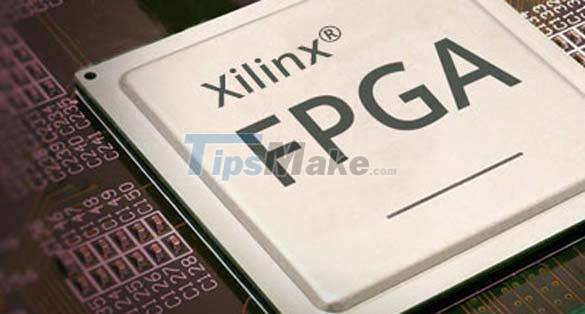What is FPGA? What is FPGA used for?
This article will explain what FPGA is and what it is used for. Find out below!
What is FPGA?

FPGA is an acronym for Field Programmable Gate Array. It is a semiconductor device based on a matrix of Configurable Logic Blocks (CLBs), whereby much of the electrical function inside the device can be changed by the design engineer.
FPGAs are defined by an array of interconnected digital subcircuits that perform common functions while providing a high degree of flexibility. FPGAs belong to a class of devices known as programmable logic (or programmable hardware). The FPGA doesn't do anything by itself; instead it is configurable to be whatever digital circuit is required. So how does FPGA work?
How does FPGA work?
The way FPGAs work is very simple. A configuration is loaded into the FPGA, then it will start working like whatever circuit you ask it to. The FPGA's RAM-based configuration means it can be reconfigured an unlimited number of times.
Types of FPGA
There are two main ways to classify FPGAs: By the internal arrangement of blocks or by type of programming technology. When it comes to arrangement, FPGAs fall into one of three categories:
1. Symmetrical array : This arrangement is made up of rows and columns of interconnected logic blocks, surrounded by input/output blocks.
2. Row-based architecture : This arrangement alternates rows of programmable logic blocks and connection resources, with input/output blocks along the edges.
3. Hierarchical PLD (Programmable Logic Device) : These devices have a more complex layout. The top level is made up of logical blocks and interconnected. Logic blocks contain logic modules, which have combinational and sequential functional elements.
Common uses of FGPA

There are countless uses with FPGAs covering a wide range of fields. Common use cases of FGPA include:
- Video and image processing.
- Military applications.
- Software-defined radio.
- Create medical images.
- Wired and wireless communication.
- Integrate many simple programmable logic devices.
- Voice recognition.
- Passwordcation.
- Digital signal processing.
- ASIC prototyping.
- Device controller.
- Computer hardware emulation systems.
- Bioinformatics.
- High performance computing.
- Aerospace and Defense.
- ASIC prototyping.
- Car.
- Broadcasting consumer electronics.
- Medical data center.
- Scientific and industrial instruments.
Benefits of using FPGA
FPGAs offer many advantages over conventional implementations.
| Benefit | Details |
|---|---|
| Integration | The more functionality in today's FPGAs (including on-chip processors, transceivers of I/Os at 28Gbps or higher, RAM blocks, DSP engines) the fewer devices there are on the board. This increases reliability as the number of failures due to equipment failure is reduced. |
| Flexibility | The function of the FPGA may change after each device startup. This means that if a design engineer wants to make a change, they can simply upload a new configuration file to the device and make the change. |
| Acceleration | FPGAs can be brought to market quickly. Because of the flexibility of FPGAs, original equipment manufacturers can ship the system as soon as the design is proven to work and has been tested. |
| Long term availability | Using an FPGA gives you independence from component manufacturers, because the functionality is not in the module itself but in its configuration. This programmability can be implemented in a way that doesn't require any tuning on different FPGAs. |
 The most complete and easy way to use CMD (Command Prompt)
The most complete and easy way to use CMD (Command Prompt) What is Browser Fingerprinting? How can you block it?
What is Browser Fingerprinting? How can you block it? What is DirectStorage, what is it for on Windows 10, Windows 11
What is DirectStorage, what is it for on Windows 10, Windows 11 What are DLL files? How does it work? Why is the DLL file missing?
What are DLL files? How does it work? Why is the DLL file missing? What is color space?
What is color space? What is the Desktop.ini file? How to hide and delete Desktop.ini file on Windows
What is the Desktop.ini file? How to hide and delete Desktop.ini file on Windows